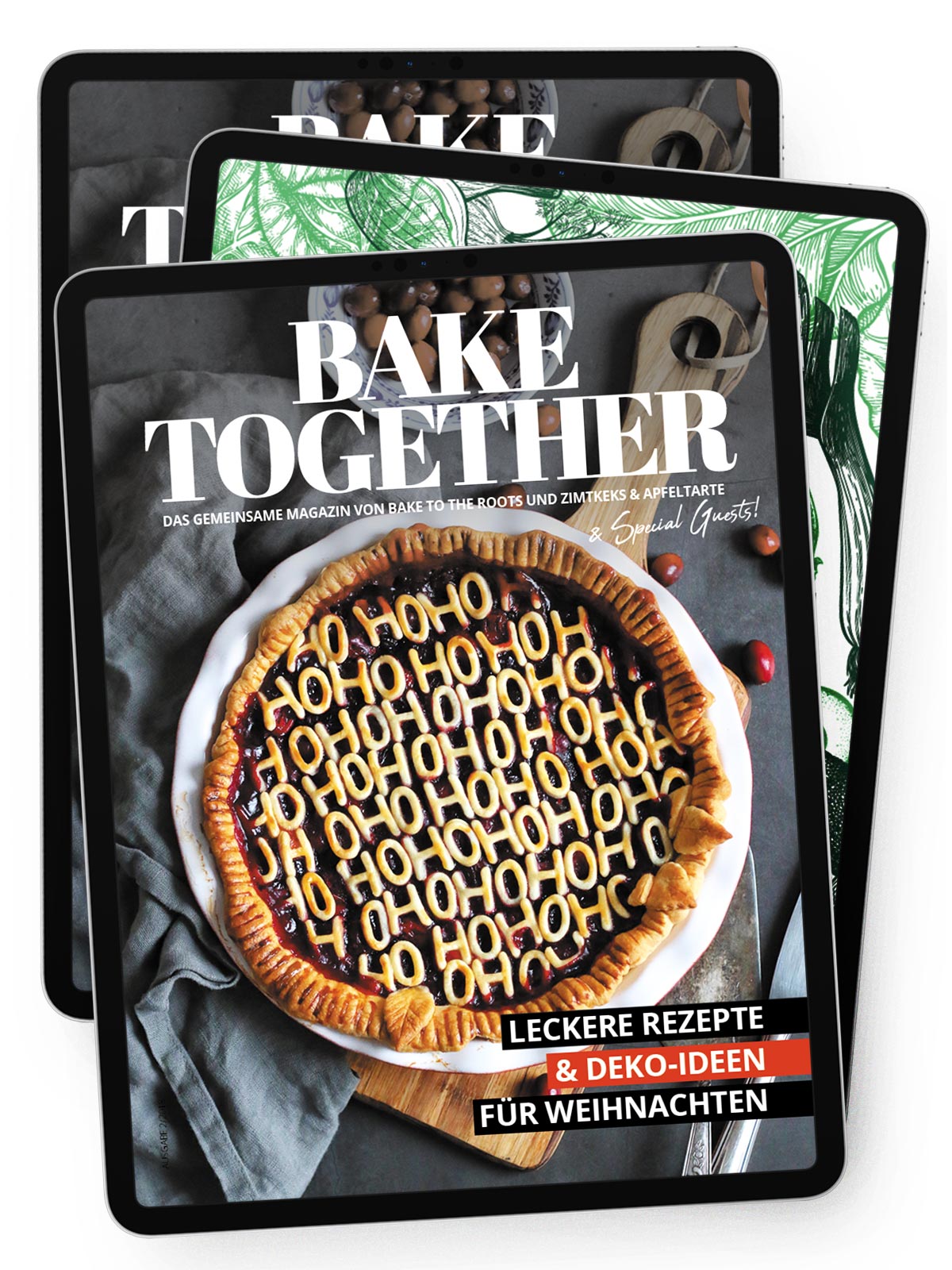This is arguably one of the most famous cheesecakes in the world: a Classic Basque Cheesecake (aka. San Sebastian Cheesecake). It’s the reigning king (or queen) of cheesecakes. Some might want to give this title to the famous New York Cheesecake, but for me, Basque Cheesecakes are simply the »best of the best«! Sorry, dear New Yorkers. Yours is a great runner-up ;P
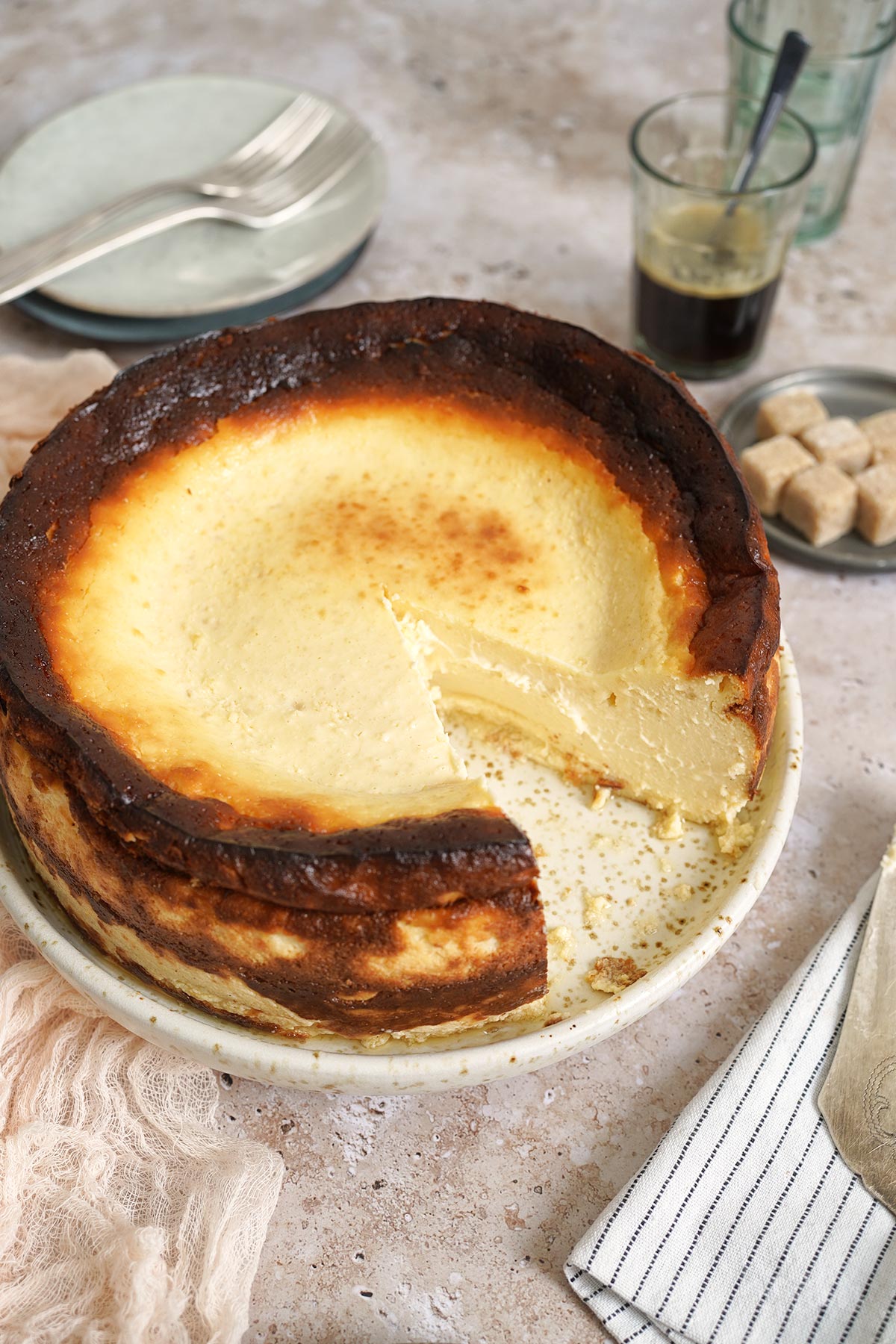
Other cheesecakes are, of course, not necessarily bad(der). Cheesecakes are delicious. Almost all of them. But the cheesecake from the Basque Country is, in my opinion, extremely delicious and creamy… and super easy to prepare! You could argue about the appearance, but the rest? All top-notch ;P
Basque cheesecakes are also called »Burnt Cheesecakes« due to their very dark surface. Unfortunately, my oven does not do the perfect burnt top. I could let the cake in the oven much longer to get a black surface, but that would mean the cake is really burnt and not edible anymore ;P I guess I have to live with a dark top only around the edges… which is fine for me. I prefer a really creamy interior over a blackened exterior.
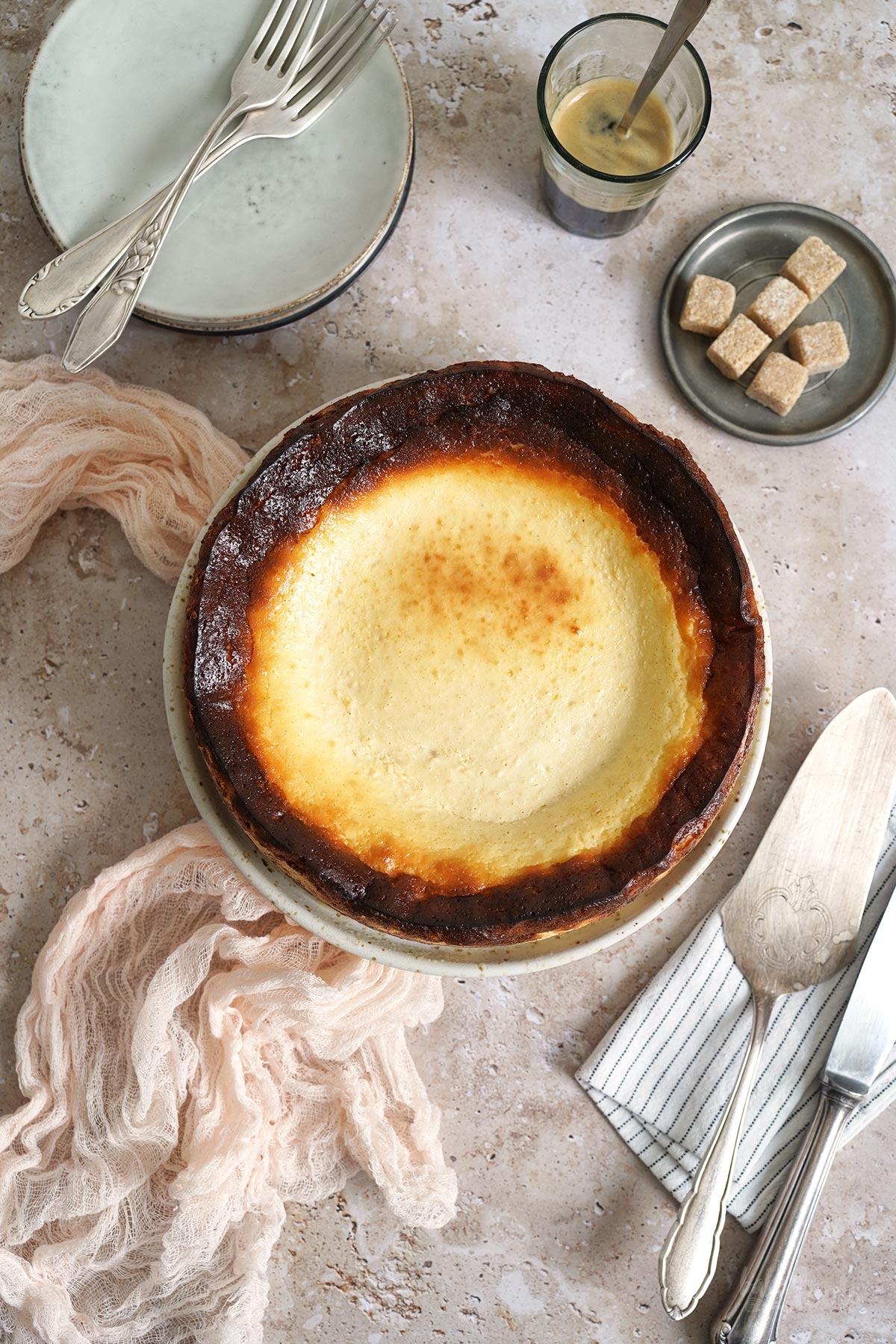
Other cheesecakes might be creamy as well if you bake them correctly, but the Basque cheesecake is something special here. It is super creamy from top to bottom and all of that without the actual need for a base. All you have to do here is pouring the cheesecake mixture into the baking tin and bake it. No rolling out dough for the base, no pre-baking, nothing. The filling firms up nicely while the rest stays creamy – simply ingenious ;)
Something you have to keep an eye on here is the baking time. Well… something you have to keep an eye on for every cake I guess, but if you are not careful here you can ruin the whole cake. No pressure! ;P The creaminess of the cake is determined by the right time in the oven. Even if the dark surface of the cake is considered something special here, the texture is much more important. You should always check towards the end of the baking time if the cheesecake filling is still wobbling nicely when you move the baking tin. The filling should not move all over, just in the center. If that is the case the cake is ready to leave the oven. It might look as if the cake filling is not baked enough, but while cooling down the whole cake will firm up a lot ;)
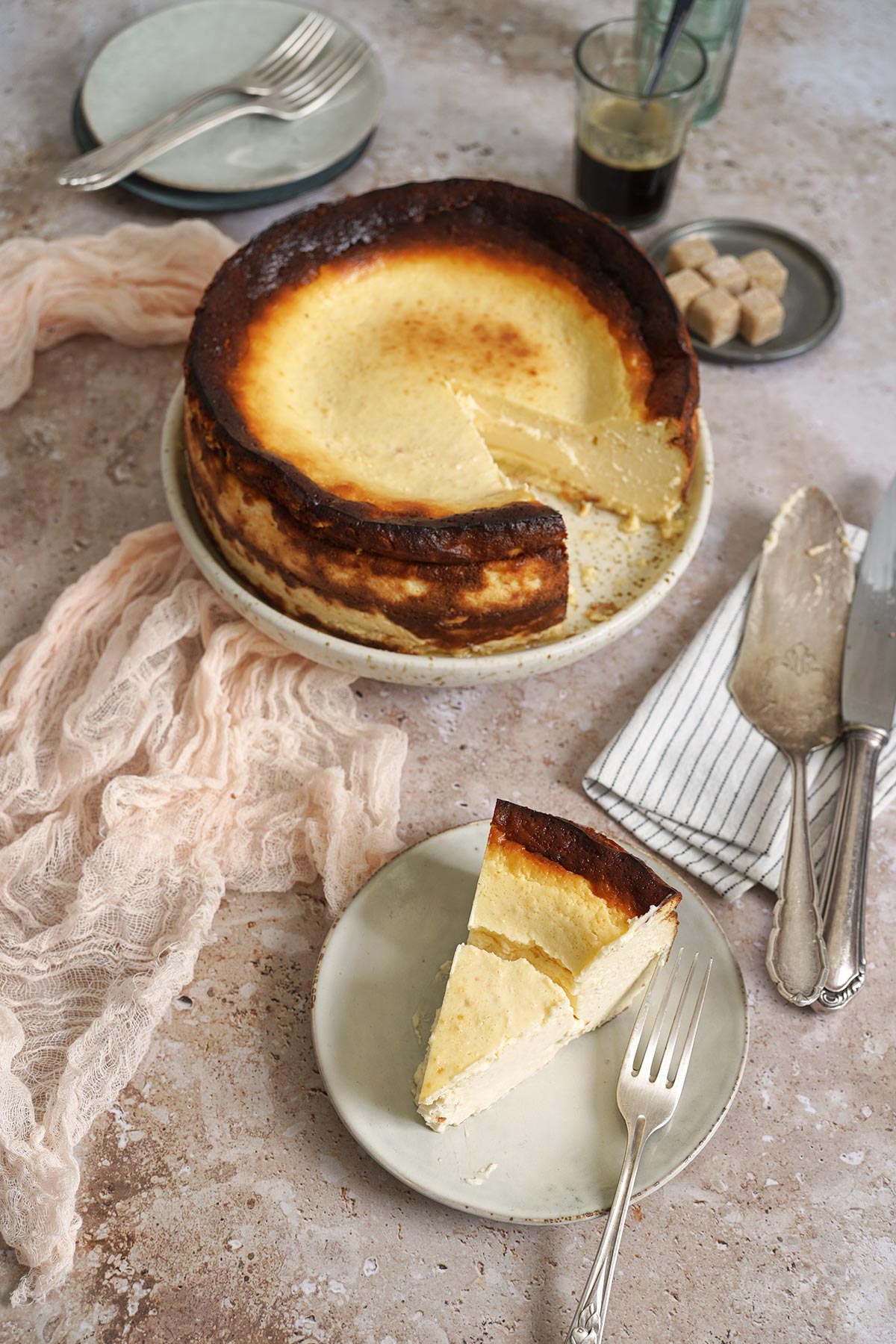
Getting the perfect texture is not complicated at all, but you might need to bake this cake several times to be really confident when to take it out of the oven. Every oven is different and heats up differently – so my baking times might vary slightly from yours for the perfect texture. Unfortunately, the only thing that really helps here is checking how the filling behaves and testing several times if necessary until you find the perfect time.
If you need more than one attempt to get the texture right, it’s no big deal – the less-perfect cheesecakes are still delicious and absolutely enjoyable. Family and friends will still queue to get a slice of a »slightly failed« Basque cheesecake ;P
I got already numerous versions of Basque cheesecakes here on the blog – there is much more you can do besides the »classic« version. If you want to get the recipe just click/tap on the corresponding picture, and you will be forwarded to the article with the recipe.
INGREDIENTS / ZUTATEN
28 oz. (800g) cream cheese (heavy cream), at room temperature
7 oz. (200g) sugar
1 pinch of salt
5 medium eggs, at room temperature
14 oz. (400g) heavy cream, at room temperature
1 oz. (30g) all-purpose flour
2 tsp. vanilla extract
800g Frischkäse (Doppelrahmstufe), Zimmertemperatur
200g Zucker
1 Prise Salz
5 Eier (M), Zimmertemperatur
400ml Schlagsahne, Zimmertemperatur
30g Mehl (Type 405)
2 TL Vanille Extrakt
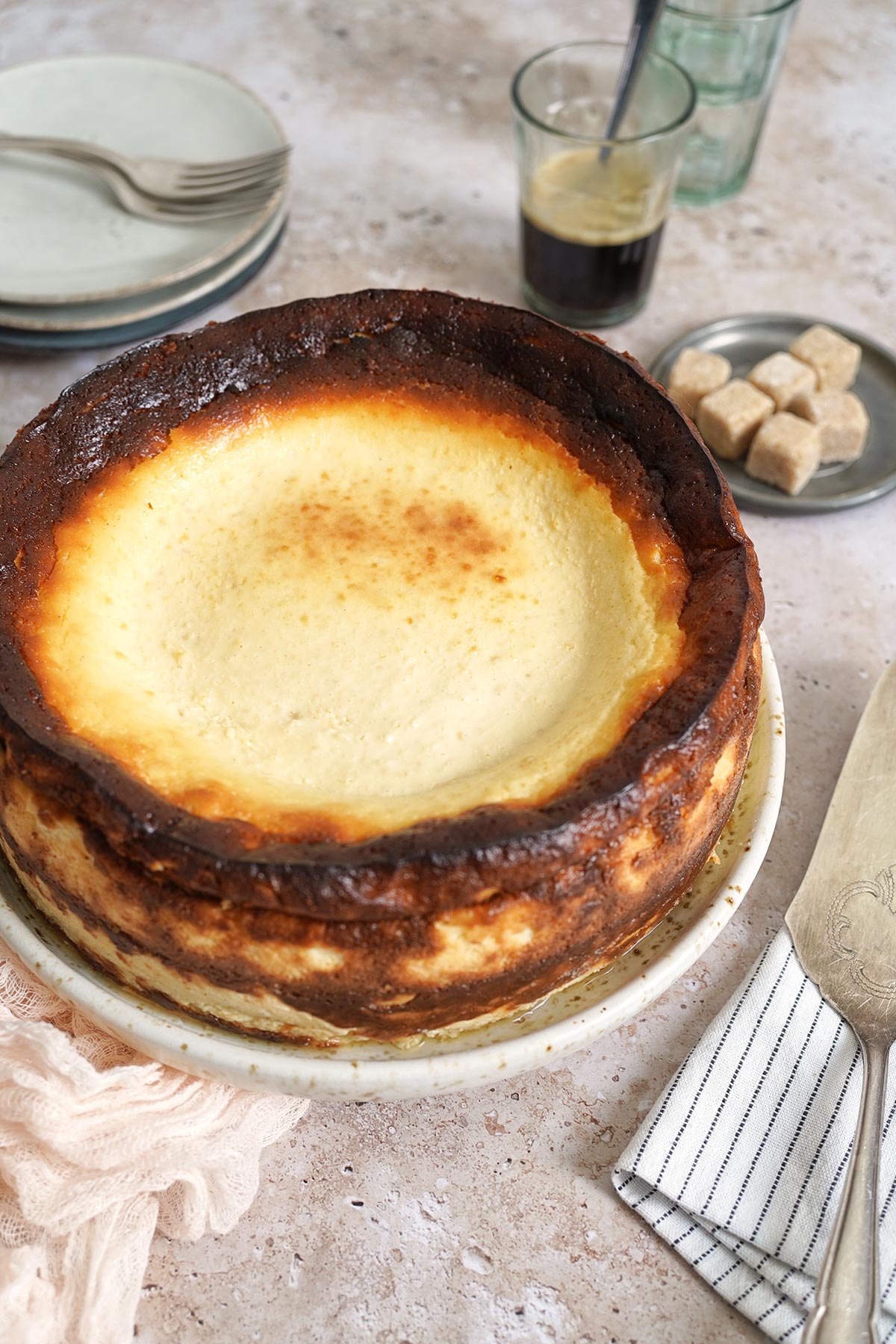
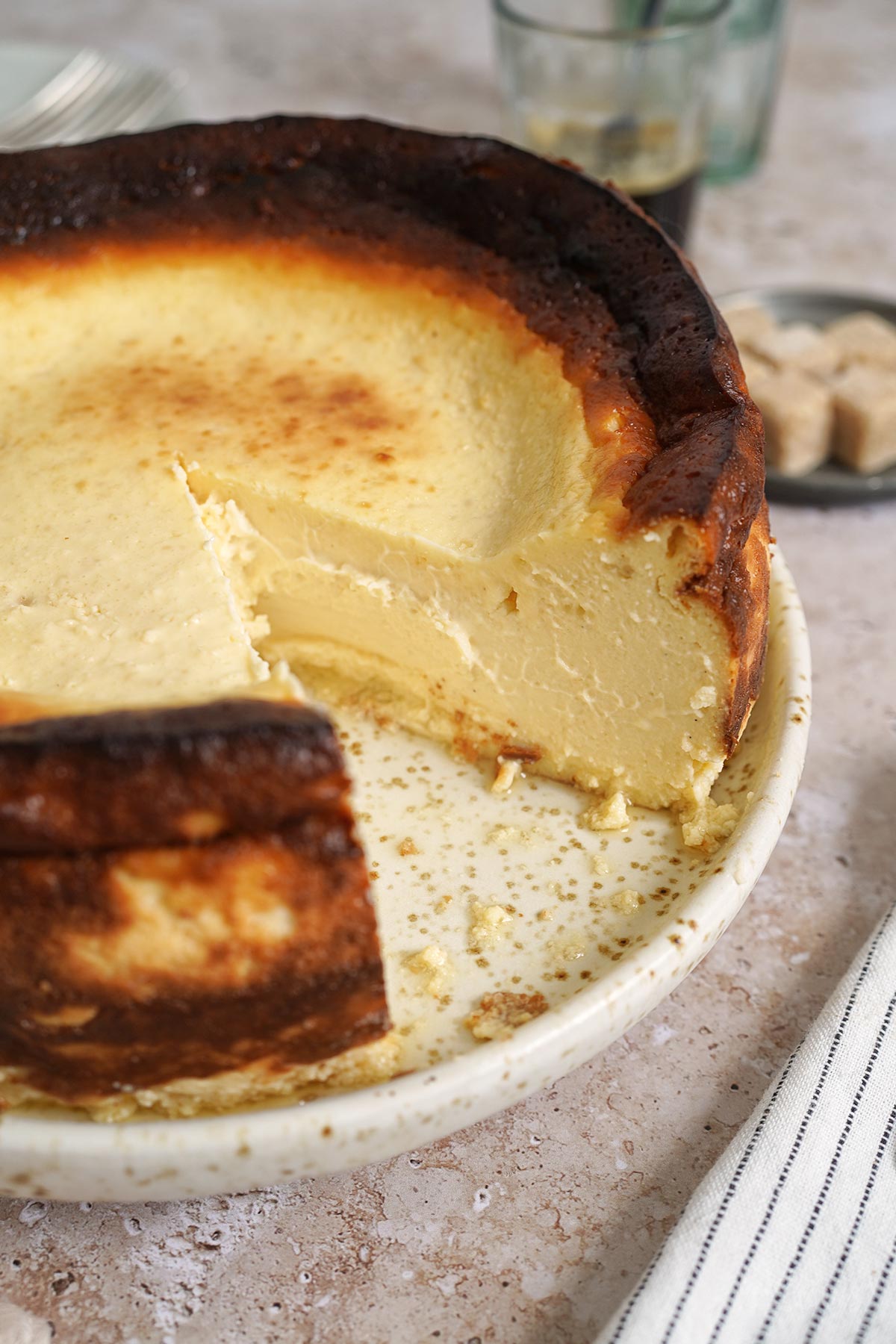
DIRECTIONS / ZUBEREITUNG
1. Preheat the oven to 410°F (210°C) convection heat. Lightly grease an 8-inch baking tin with a loose bottom* and line it with baking parchment – a round piece for the bottom and a long strip along the edges. The baking paper along the edges should overlap the edge of the baking tin by a few inches. The cheesecake will rise quite a bit. Set aside.
2. Add the cream cheese, sugar, and salt to a large bowl and mix to combine. Work with a simple whisk or rubber spatula. You want everything well blended, but no air trapped in the mixture. Add the eggs one at a time and stir until well combined. Whisk the flour with some of the heavy cream and vanilla extract until smooth, then add to the large bowl along with the remaining heavy cream and stir to combine. Pour the mixture into the prepared baking tin, jiggle the tin a bit to allow bubbles to rise to the top (you can additionally remove them with a kitchen torch if you want), then bake in the center of the oven for about 35 minutes. The edges of the cheesecake should have firmed up and possibly gotten a decent amount of color. In the center, the cheesecake should still jiggle slightly when you tap the baking tin.
3. Remove the Basque cheesecake from the oven and loosen it from the baking paper with a sharp knife, so the top of the cheesecake can contract undisturbed. Let cool down completely inside the baking tin, then place in the fridge overnight to set completely.
1. Den Ofen auf 210°C (410°F) Umluft vorheizen. Eine 20cm Backform mit Hebeboden* leicht einfetten und mit Backpapier auslegen – ein rundes Stück für den Boden und ein langer Streifen für den Rand. Das Backpapier am Rand sollte einige Zentimeter überstehen. Zur Seite stellen.
2. Frischkäse, Zucker und Salz in einer großen Schüssel verrühren. Arbeitet mit einem einfachen Schneebesen oder Gummispatel – es soll alles gut vermengt sein, aber keine Luft in die Masse eingeschlossen werden. Die Eier einzeln dazugeben und unterrühren. Das Mehl mit etwas von der Schlagsahne und dem Vanille Extrakt glatt rühren, dann zusammen mit der restlichen Sahne zur großen Schüssel dazugeben und unterrühren. Die Masse in die vorbereitete Form füllen, etwas an der Form rütteln, damit Bläschen aufsteigen können (und ggf. mit einem Küchenbrenner entfernen) und dann für etwa 35 Minuten in der Mitte des Ofens backen. Die Ränder des Käsekuchens sollten fest geworden sein und dürfen ordentlich Farbe bekommen haben – in der Mitte sollte die Käsekuchenmasse noch leicht wackeln, wenn man an der Form rüttelt.
3. Den Baskischen Käsekuchen aus dem Ofen holen und am Rand mit einem scharfen Messer vom Backpapier lösen, damit sich die Oberfläche ungestört zusammenziehen kann. In der Form dann komplett abkühlen lassen. Danach noch einmal über Nacht in den Kühlschrank stellen.

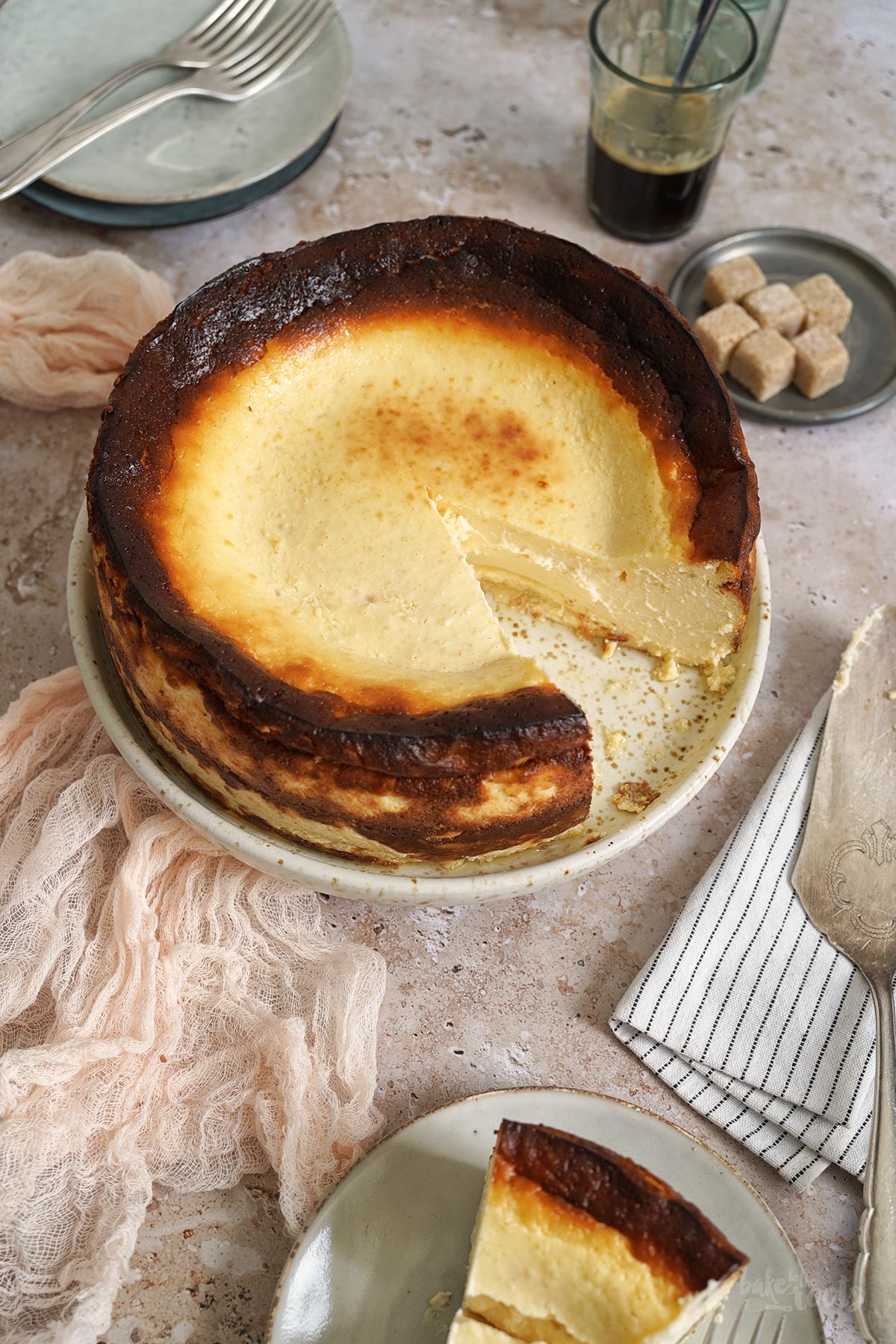
Craving more? Keep in touch on Facebook, Twitter, Instagram and Pinterest for new post updates and more. You can also contact me with any questions or inquiries!
Here is a version of the recipe you can print easily.
Print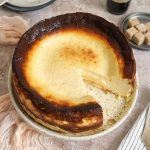
Classic San Sebastian Cheesecake (Burnt Cheesecake)
- Prep Time: 00:10
- Cook Time: 00:35
- Total Time: 10:00
- Yield: 1 1x
- Category: Cheesecake
- Cuisine: Spain
- Diet: Vegetarian
Description
An absolute classic: San Sebastian Cheesecake aka. Basque Cheesecake aka. Burnt Cheesecake. Super rich and extremely creamy!
Ingredients
28 oz. (800g) cream cheese (heavy cream), at room temperature
7 oz. (200g) sugar
1 pinch of salt
5 medium eggs, at room temperature
14 oz. (400g) heavy cream, at room temperature
1 oz. (30g) all-purpose flour
2 tsp. vanilla extract
Instructions
1. Preheat the oven to 410°F (210°C) convection heat. Lightly grease an 8-inch baking tin with a loose bottom* and line it with baking parchment – a round piece for the bottom and a long strip along the edges. The baking paper along the edges should overlap the edge of the baking tin by a few inches. The cheesecake will rise quite a bit. Set aside.
2. Add the cream cheese, sugar, and salt to a large bowl and mix to combine. Work with a simple whisk or rubber spatula. You want everything well blended, but no air trapped in the mixture. Add the eggs one at a time and stir until well combined. Whisk the flour with some of the heavy cream and vanilla extract until smooth, then add to the large bowl along with the remaining heavy cream and stir to combine. Pour the mixture into the prepared baking tin, jiggle the tin a bit to allow bubbles to rise to the top (you can additionally remove them with a kitchen torch if you want), then bake in the center of the oven for about 35 minutes. The edges of the cheesecake should have firmed up and possibly gotten a decent amount of color. In the center, the cheesecake should still jiggle slightly when you tap the baking tin.
3. Remove the Basque cheesecake from the oven and loosen it from the baking paper with a sharp knife, so the top of the cheesecake can contract undisturbed. Let cool down completely inside the baking tin, then place in the fridge overnight to set completely.
Notes
It’s time to whip up something delicious!
Links marked with an asterisk (*) are affiliate links (advertising/Werbung) to Amazon Germany. If you click on one of those links and buy something via this link, I will get a commission for that sale. The price of whatever you buy is not affected in any way by this.

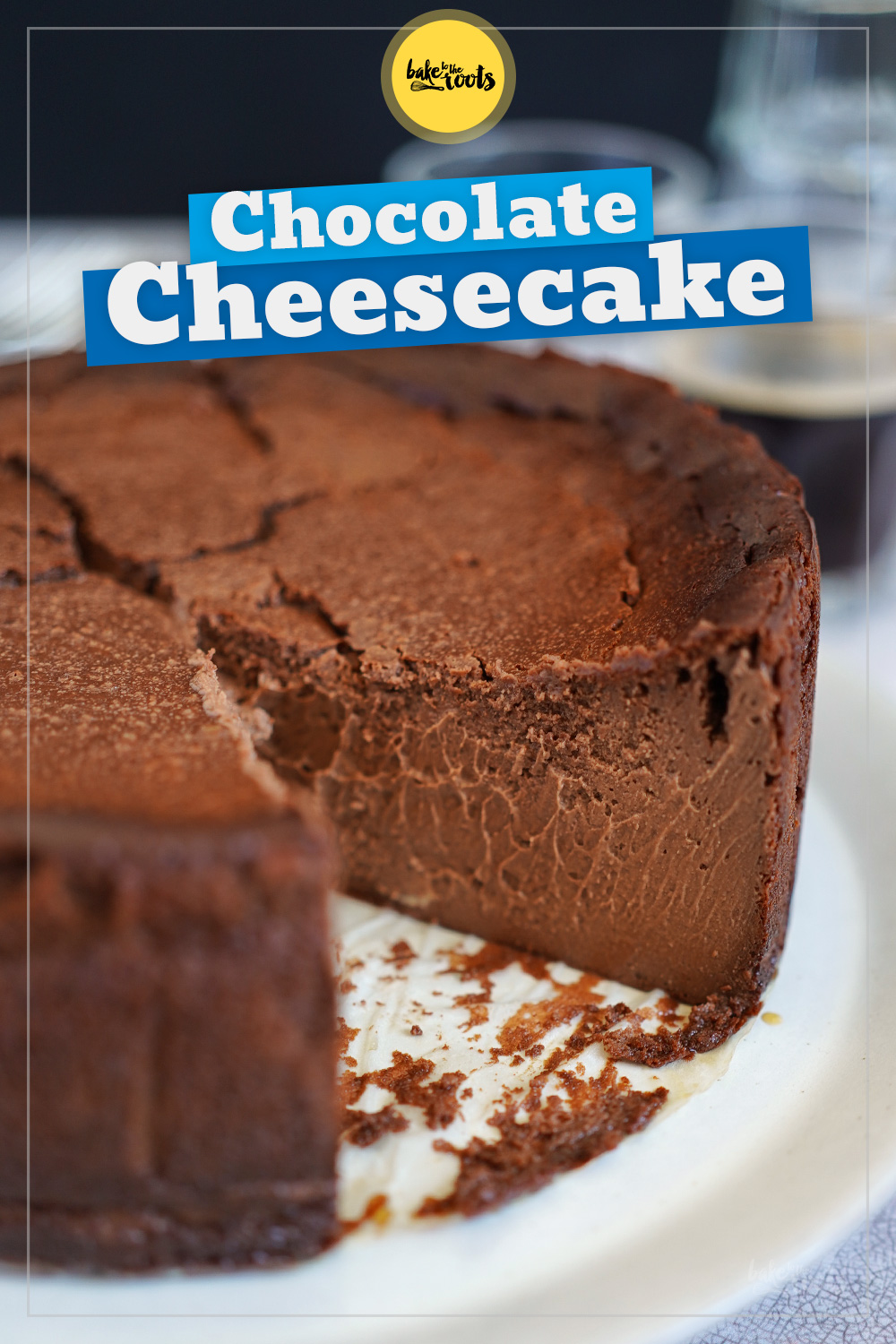

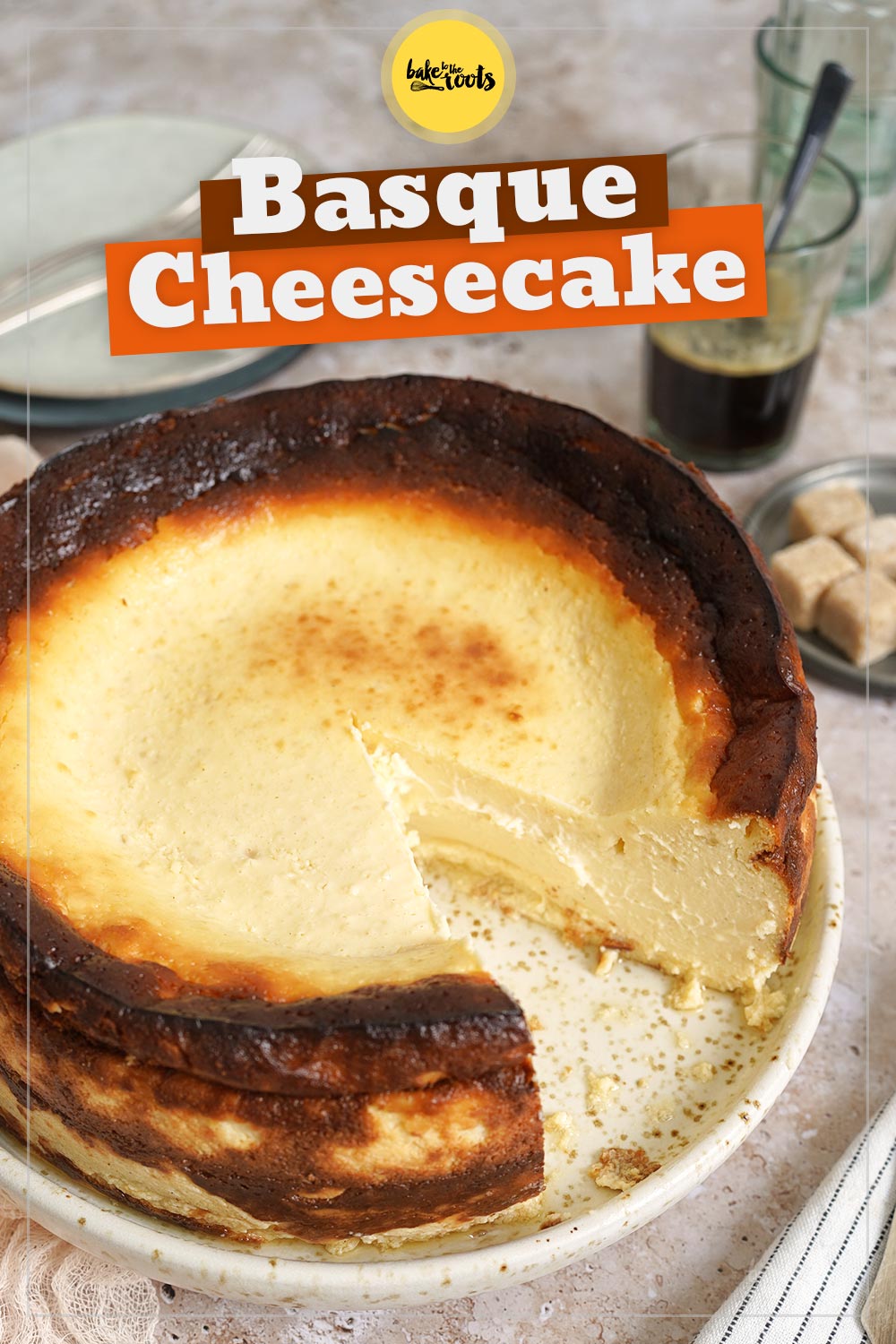

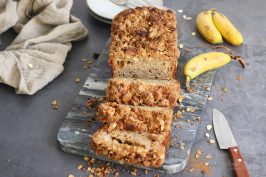
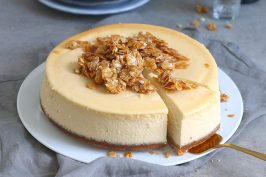
 I love my job, but in between I love to bake and try new things in the kitchen. A lot of my friends and colleagues encourage me to bake - for a very simple reason: they get the leftovers - and it seems they like it most of the time ;)
I love my job, but in between I love to bake and try new things in the kitchen. A lot of my friends and colleagues encourage me to bake - for a very simple reason: they get the leftovers - and it seems they like it most of the time ;) 